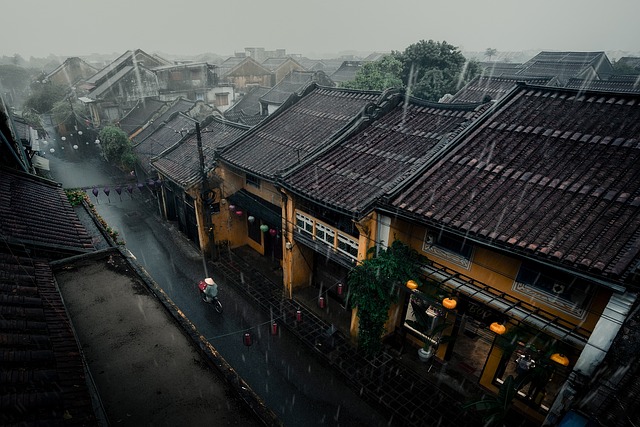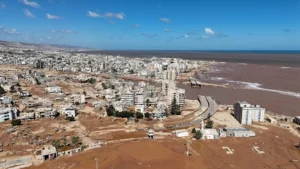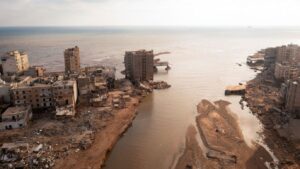For so long, we have heard about hurricanes, typhoons, and deadly cyclones affecting different parts of the world. In addition to those, now, here we have medicanes. These unusual storms originate over the Mediterranean Sea and can continue gaining strength over cold water. For people trying to understand “What are medicanes?” The incident of the Libya flood in 2023 is a great example. As per researchers, medicanes are here to stay, and with the rise in global temperature, the frequency of these storms will be on a steady upsurge.
What Are Medicanes?
The Mediterranean Sea is induced by hazards involving short-lived depressions – popularly known as the Mediterranean lows. The ones among these that are the most intense turn out as medicanes or Mediterranean cyclones. Usually, the structure of a medicane is similar to that of a hurricane, but the former is much weaker, affects less of an area, and the storm lasts fewer days.

Also, the ideal temperature for a hurricane to be formed is more than 27 degrees Celsius (80 degrees Fahrenheit). These storms usually travel from the east to the west and have a warm core. In contrast, medicanes can develop over cold water at only 14 degrees (57 degrees Fahrenheit) in temperature. These storms travel west to east (the opposite of hurricanes) and have a cold eye. Under some special conditions, medicanes can also become as strong as a category 1 hurricane.
So far, most of the medicanes have formed in the north by the coast of France, in the west – by the coast of Spain, in the east by the Corsica island, and in the south by the shores of Algeria. Up to the Ionian Sea, the Gulf of Sidra is also a secondary region for the medicanes to form and continue in action.
The Physiology Of Medicanes
Now that you have a brief idea about “What are medicanes?” let’s help you understand its climatology, the most likable time for the particular to occur, and other essentials.
- The ideal time for medicane is in autumn when the sea is warm between the Ionian Sea, the North African coast, and the western Mediterranean. A layer of colder air from the higher altitudes develops convections with warm air rising from the sea to form a low pressure. Annually, there are a maximum of two medicanes on an average.
- In general, all medicanes have a radius of 70 to 200 km. These storms can retain their tropical characteristics for up to 3 days and can travel between 1000 km to 3000 km.
Why Are Mediterranean Storms So Dangerous?
With time, medicanes has become a common phenomenon. Of late, there have been multiple cases where these storms have led to quite big destructions. Those involved in weather forecasting and monitoring have claimed it is difficult to work on climate signals related to medicanes. All because these storms are rare and usually hard to detect.
Records So Far
Between 2016 to 2018, Greece alone has faced three medicanes. In 2019, one medicane was identified by the Spanish Weather Services between the Algerian coast and the Balearic Islands. Then, in 2020, September – Greece was again hit by a medicane with winds blowing at 120 km/hr. Three people lost their lives in Karditsa, while the rest of the city was devastated by triggering floods, power cuts, and landslides.
A similar storm hit the Italian island of Sicily in 2021.
Storm Daniel Hitting Libya

Moving on to 2023, storm Daniel caused heavy rainfall and severe floods in Greece, Bulgaria, and Turkey. The coastal areas experienced record rains in the last few years. 11 people were killed in the storm, and the properties (buildings and cars) suffered heavy damage.
The storm then moved into Libya. The initial touchdown point was on the eastern side of Libya, after which it tore into a town named Derna. There was torrential flooding whose after-effect tore down two dams. The rain came at night when most people were fast asleep. Suddenly, there was a loud sound of the dams collapsing, and the flood water swiped off the residents completely.

As per the government reports, the dams were built in the 1970s and had not been properly maintained for all these years. The residents were only warned against heavy rainfall. No precautions were taken for evacuation, as there was no indication that the dams might collapse.
Circumstances in Libya went too out of hand for anyone to control. There were a total of 11,300+ cases of the death count. At the same time, an additional 10,100 people were listed as missing. According to the official records, 30,000 people had to be displaced. The UN, Egypt, Tunisia, and Algeria have sent search teams. Italy did send humanitarian aid.
The after-effects of a storm are always heartbreaking, but medicanes, being quite new in the scene, are hard to predict within the due date. However, authorities are trying their best, and everyone believes more studies in the near future will help enhance the mitigation process.



